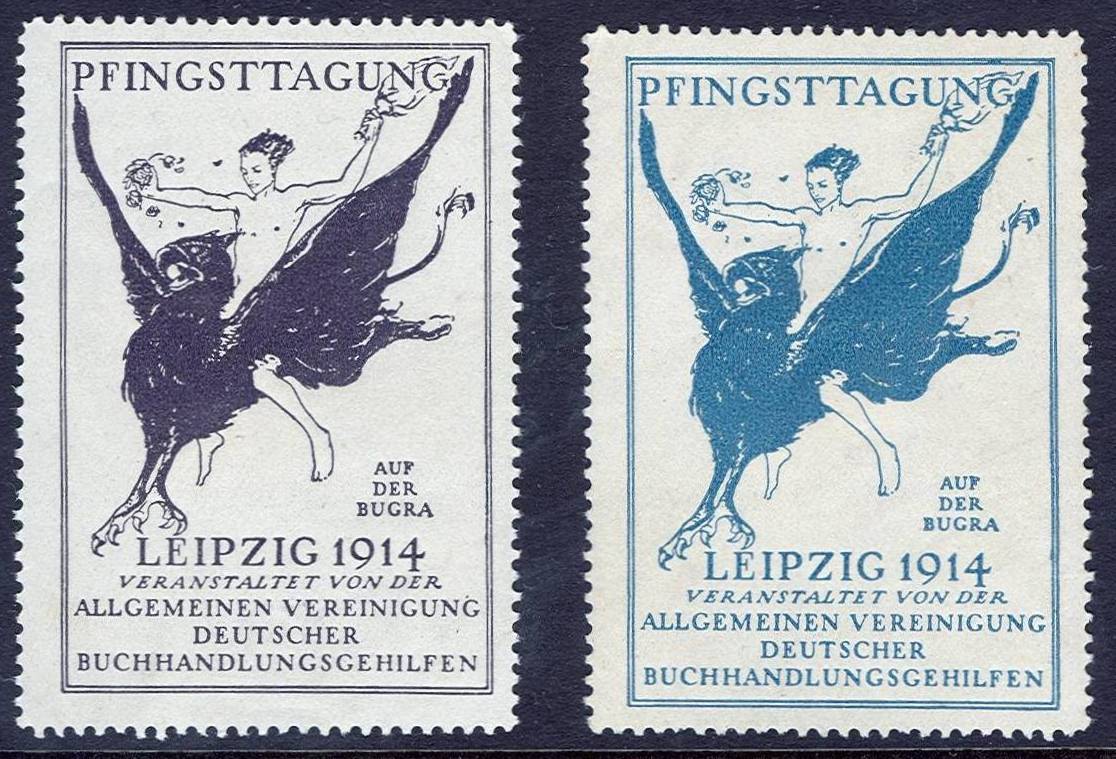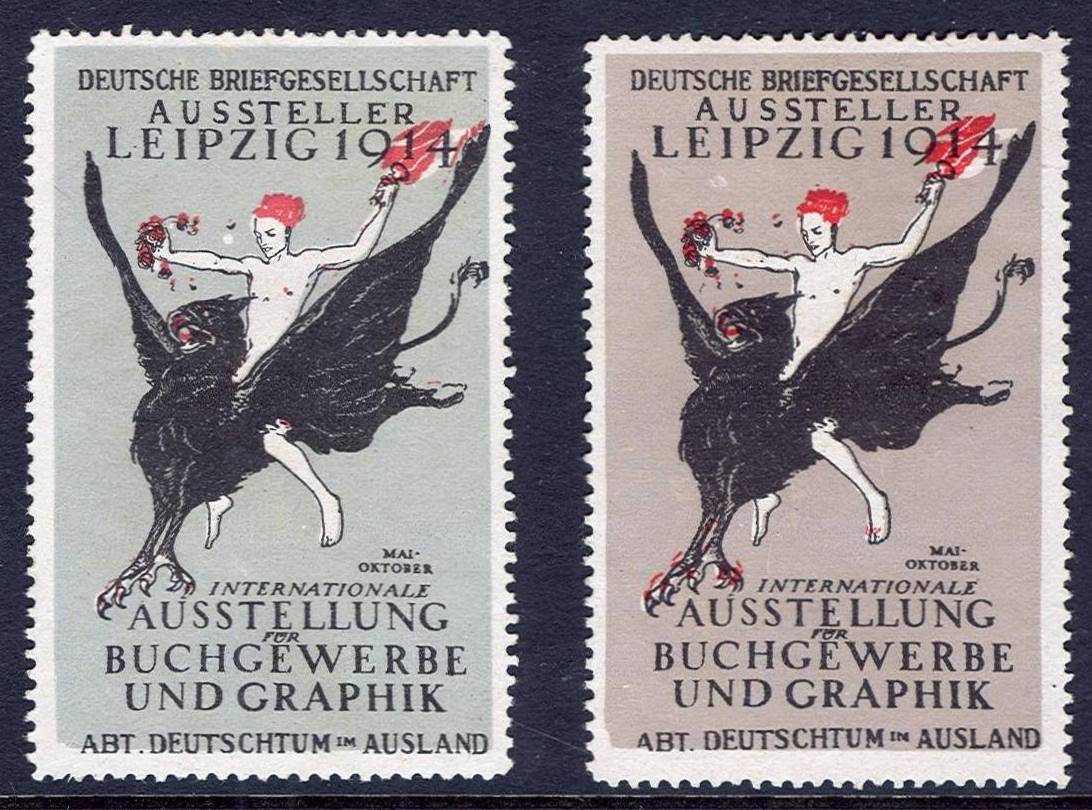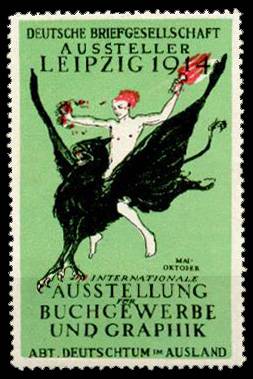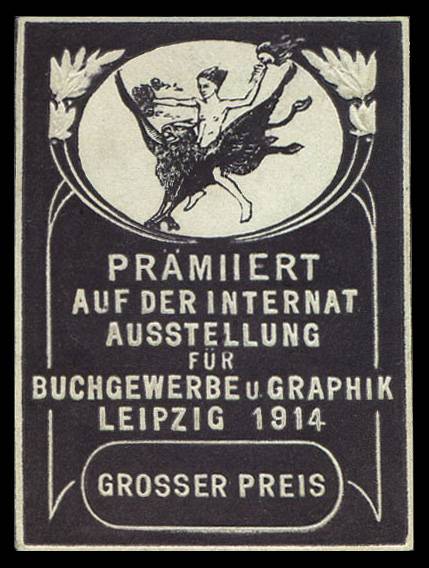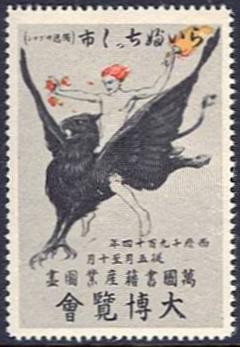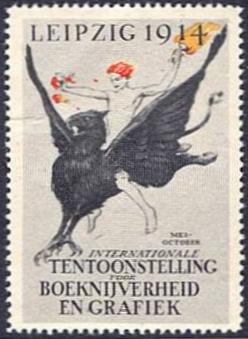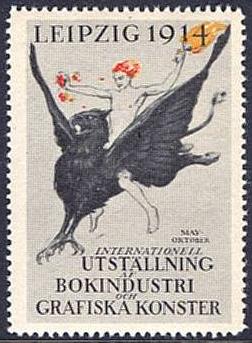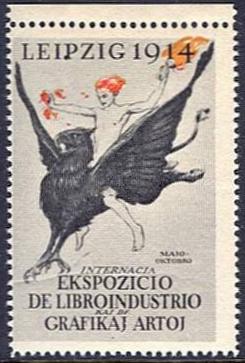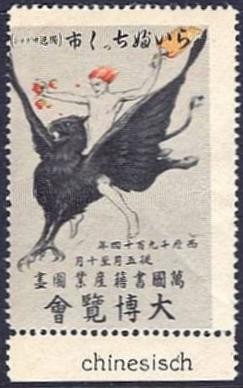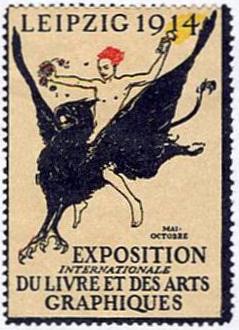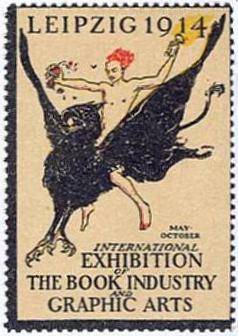POSTER STAMPS AND POSTCARDS OF THE BUGRA - LEIPZIG, 1914
Internationale Ausstellung für Buchgewerbe und Graphik
|
Introduction
The poster stamps
The Königliche Akademie für Graphische Künste und Buchgewerbe New York Times article about the Bugra
|
POSTER STAMPS OF THE BUGRAThere are two primary poster stamps for the Bugra: Prometheus on a Gryphon (which was used also for the poster advertising the exhibition), and a simple, text-only hexagon. The Prometheus stamp occurs in four official versions, and, for one of those, 13 languages (including Esperanto, which was at the height of its popularity at that time). PROMETHEUS RIDING A GRYPHON, DESCENDING FROM MOUNT OLYMPUS TO BRING FIRE TO MAN |
|
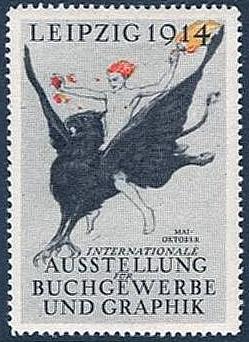
|
VERSION 1: The most plentiful version of this very dramatic stamp is this one, which was issued in thirteen languages: German, French, English, Italian, Spanish, Portuguese, Danish, Swedish, Dutch, Russian, Chinese, Japanese, and Esperanto. All are relatively common today. The image depicts a naked youth riding a gryphon, and carrying a lighted torch in one hand, while he scatters either flames or flowers with the other. The paper is whitish, and the image has a grey background. The rider is probably meant to represent Prometheus. The designer was Walter Tiemann, type designer, typographer, painter, and teacher at the Leipzig Royal Academy. I have been unable to find any explanation of why Tiemann chose this design, or what he meant it to symbolize, so can only guess. The gryphon occurs also on poster stamps of the Leipzig Royal Academy, so it may have been a symbol of that institution. Prometheus bearing light to mankind could be taken to symbolize the development of knowledge. Scroll down for images of all thirteen languages, as well as a few unusual varieties. Are there other languages? |
|
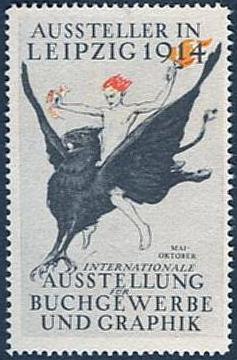
|
VERSION 2: This is the "Exhibitor" version of the stamp, in German only. It is relatively common. It would have been given to stall holders to use on their mail and publicity. |
|
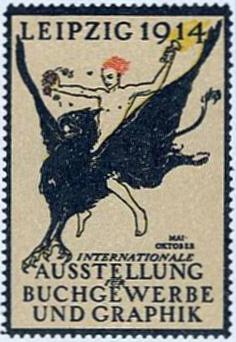
|
VERSION 3: The Prometheus image occurs also with a black border, but I have seen only four languages with this design: English, French, German, and Italian. The paper is yellowish, and there is no background. The image differs slightly from that on the first version, so it must have been printed from different plates. The lettering on the German and French versions differs from the first version significantly as well. These stamps are less common. 9/10/2014 - I just noticed that I had a German version with "AUSSTELLER" - so that makes five. And Tom Minor's article in the Journal of the PSCC says this was a preliminary version, rejected and replaced with the one with white border, either because it was too somber, or because the border made poor centering too obvious. Scroll down for images of all four languages. |
|
|
VERSIONS 4 thru ???: And the longer one looks, the more varieties of this design show up. |
||
VERSION 1 - ALL THIRTEEN LANGUAGES
Rest your cursor over a stamp to see the language
VERSION 1 - VARIETIES
VERSION 1 - BLOCK of 25
I am always curious about the printing format of stamps, so this demonstrates that at least the German stamp was printed with all the stamps on a sheet the same.
VERSION 3 - ALL FOUR LANGUAGES
Plus German Aussteller version
Rest your cursor over a stamp to see the language
All text and images are the property of the author. Any errors are his.
If
you have better or additional information about anything shown or discussed here,
please Email the webmaster.

Send feedback to the webmaster: CLICK HERE
Created -- 07/11/2010
Revised -- 08/15/2025

